| |
|
| Six-sided Vision Inspection Machine, CVA-400 |
|
|
CVA-400 is designed to inspect the surfaces of various micro cuboid devices, such as MLCC, Chip-R, LED, and QFN.
The patented vibration feeders arrange and place the devices onto the rotating table.
Devices are then delivered through each camera to capture images. The vision algorithm analyzes the images and inspects kinds of defects.
The hardware gets the results and ejects the devices to the sorting bins by high-pressure air.
The maximum overall processing speed can reach 12,000 pcs/min. The industrial computer and cameras,
along with the simplicity design, increase the reliability and lower the maintenance fee.
The friendly user interface lowers the setup efforts and eases the operation.
Both the hardware and software are in-house designed and can be customized upon request.
|
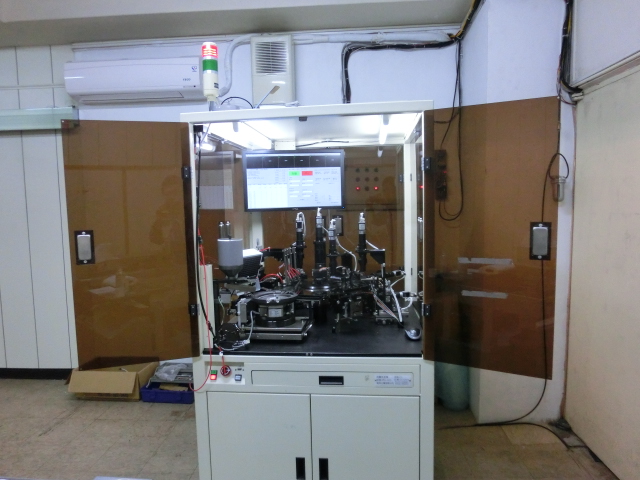
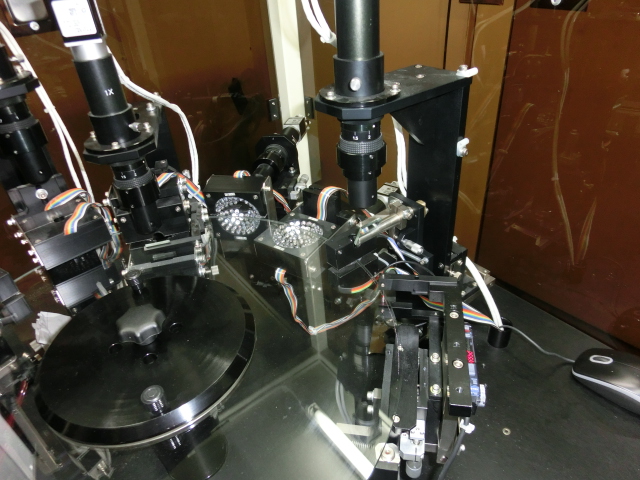
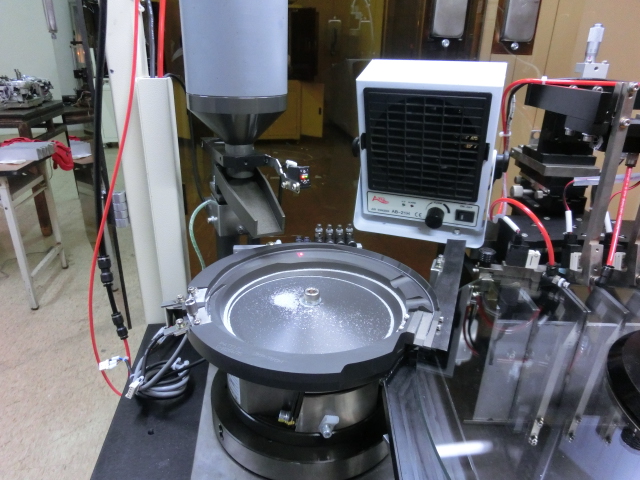
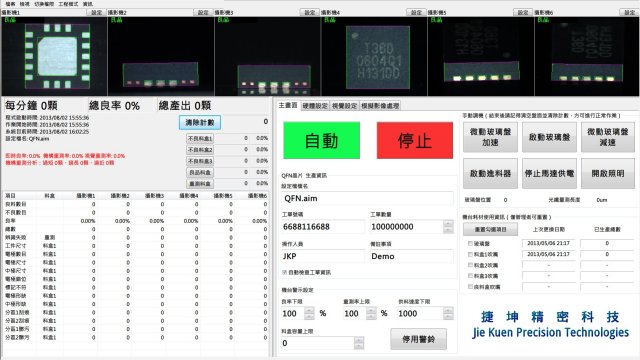
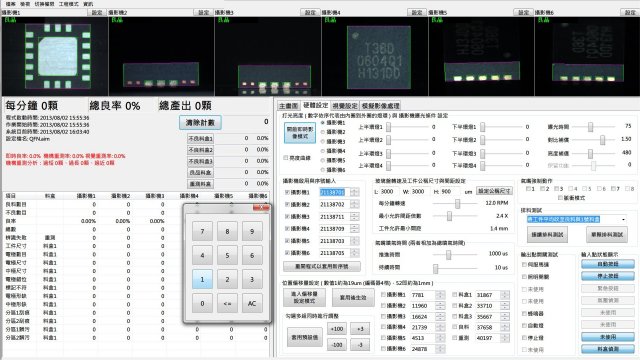
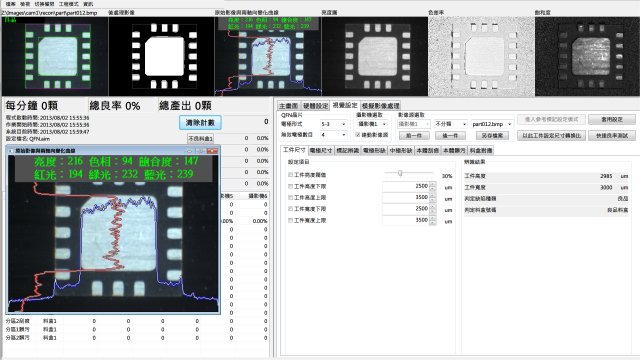
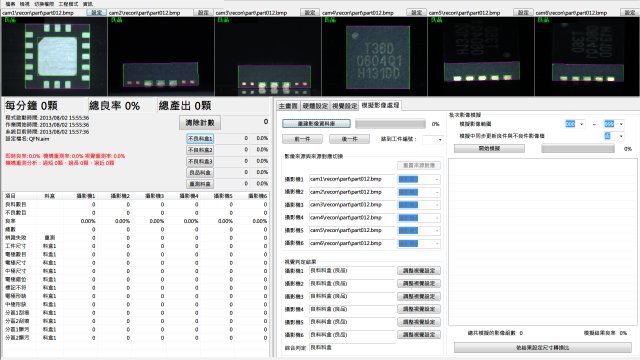
|
|
- The operating system is Windows 7 64-bit edition, bringing the machine full functions, friendly interface, and high reliability as a standlone machine.
- The industrial cameras guarantee high quality images. Data are transfered through the standard ethernet and no capture card is required. The maintenance cost can be significantly reduced.
- The zoom lenses increase the flexibility and make the production changeover faster and easier. The standard FOV is 0.6mm ~ 8mm. Different lenses can be used upon request.
- The positioning tolerance is 4 um, which lowers the retest rate and guarantees precise ejection .
- The high-speed ejection mechanism can operate at 12,000 pcs/min, making no error at the final sorting stage.
- The unigue image source option provides up to 9 different images for the inspections, effectively increasing the yield.
- The realtime display mode with the brightness variation curves assists personnels to balance the lighting.
- 1000 images for each camera are stored for the vision setup and the simulation, making the setting a breeze.
- Both the software and hardware are in-house designed and can be modified according to the requirements.
- No special component is adopted and the maintenance is easy and cheap.
|
|
- MLCC / MLCI
- White MLCI with no marking, 1/4 marking, or 1/8 marking
- MLCC Arrary / MLCI Array
- Chip Resistor
- Resistor Array
- Core of Wire-wound Inductor
- Wire-wound Inductor
- Core of NR Inductor
- NR Inductor
- Diode
- LED Chip
- QFN Chip
- Nut
|
|
- Dimensions: Measure DUT dimensions, electrode dimensions, and electrode ratios.
- Distance:Measure distances between electrodes or certain edges.
- Electrode Dirt: Find out the defects on the electrodes.
- Ceramic Soldering: Find out the undesired solders on the ceramic.
- Ceramic Dirt: Find out the dirts on the ceramic.
- Ceramic Crack: Find out the cracks on the ceramic.
- Bad Marking: Verify the marks on resistors, diodes, and QFNs.
- Bad Gluing: For NR inductors, check whether it is over-glued or under-glued.
- Insertion: For NR / wire-wround inductors, check whether any object is inserted.
- Blocked Hole: For resistor arrays, verify the size and the cleanness of the through holes.
- Bent Electrode: For diodes and LEDs, reject those DUTs with bent electrodes.
- Bad Wiring: For wire-wround inductors, check the wire position, the dirts on wires, and the void soldering.
- Chrominance: For LEDs, verify the color and the saturation.
Users can adjust the brightness thresholds, the variation thresholds, and the detection regions to have desired results,
and sort the DUTs by giving the proper upper and lower bounds of the dimensions and defect sizes.
|
|
- Introduction video: CVA_Introduction.wmv
The demo DUT is the QFN chip in 3 mm x 3 mm and the feeding speed is around 1000 pcs/min. The bowl feeder arranges the chips and only feeds those ones with downward electrodes.
- Ejection verification: CVA_DUT_Ejection.wmv
The video is recorded by the high-speed camera at 1000 PPS to verify the precise ejection and the correctness.
The demo DUT is 0201 MLCC and the feeding speed is around 5000 pcs/min. The ejector is programmed to blow one chip out of two, and ignores both if they are too close.
- Operation video: CVA_NR2520.wmv
The production device is the NR inductor in 2.5 mm x 2.0 mm and the speed is about 1400 pcs/min.
- Operation video: CVA_MLCI-0201-8w.wmv
The production device is the 1/8 white inductor in 0.6 mm x 0.3 mm and the speed is about 4200 pcs/min.
|
|
| Click here to watch or download |
|
|






